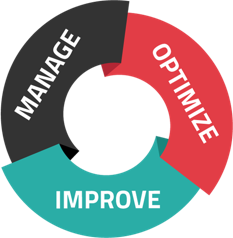
If you're an educator looking for new, exciting ways to engage students in the learning process, you've come to the right place. A digital whiteboard can bring educational topics to life, giving everyone the chance to interact with content and learn in more ways than one. Here's everything you need to know about this impressive technology (and why it deserves a place in your classrooms).
Digital Whiteboard FAQs
Sleek, interactive, and incredibly fun, a digital whiteboard is an innovative way to make classrooms feel like something out of a sci-fi movie. However, like most technology, it comes with a few questions--so here's a look at digital whiteboard basics:
How does it work?
A digital whiteboard is a combination of software and hardware. A specialized screen installed in your classroom runs the whiteboard software, and the result is a fully interactive, touch-enabled device that allows you to write and draw more effectively. The software also allows you to present other media, which means it's a lot more than your average whiteboard.
Which devices are compatible?
Although the heart of your digital whiteboard is the high-resolution screen, a good digital whiteboard can also connect to other devices to share content or invite more learners to the conversation. PCs, laptops, tablets, smartphones--these are just a few devices that may be compatible with your digital whiteboard. Plus, this technology can even connect to your school's printer fleet to access scanned documents or send digitally annotated assignments to the printer.
Can you record digital whiteboard content?
One of the benefits of a digital whiteboard is that it doesn't have to be erased between classes. Instead, you can record drawings and other content in real-time, then share the recording with absent students or even future learners.
##Benefits of a Digital Whiteboard in Your Classrooms
A digital whiteboard doesn't just look impressive on paper. It also creates concrete benefits for your classrooms, your students, and your team of educators.
Here's why a digital whiteboard deserves a spot in every classroom:
#1: It enables collaboration.
With a digital whiteboard, multiple people can contribute at the same time. That means no student has to be left out of a conversation because the whiteboard is too crowded; instead, everyone has an equal opportunity to present their ideas in a user-friendly digital format. Take, for example, a group project: A digital whiteboard allows every team member to take part in the presentation and contribute in unique ways.
#2: It supports remote and hybrid learning.
With more educational institutions opting for remote and hybrid courses, it's important for students and educators alike to find new ways of connecting. A digital whiteboard makes that easier than ever. Users can connect from anywhere, allowing them to watch and even participate remotely. Better yet, the experience is seamless across multiple devices--which means remote students get the same level of interactivity as on-site participants.
#3: It makes learning interactive.
There are lots of different ways to learn. Some students might feel fully engaged with a physical hand-out as their assignment, while others would be more interested in watching a video. A digital whiteboard helps unite all these learning styles in one effective solution. With multiple media types to choose from and plenty of options for interaction, contribution, and collaboration, educators can structure lesson plans based on what works best for their students.
#4: It empowers students to engage on their own terms.
These days, many students are digital natives. That means they expect technology to be part of just about everything--including their learning experience. Luckily, a digital whiteboard makes this possible by putting multiple tech options right at their fingertips. Whether students want to use the touch-enabled whiteboard screen, connect via their mobile phone, or even watch recorded content from home, a digital whiteboard allows them to engage in ways that keep up with their modern expectations.
Conclusion
There's a lot to know about a digital whiteboard, but the most important takeaway is that this technology deserves a spot in every classroom. That's because a digital whiteboard supports students and educators, making the learning experience more collaborative, accessible, and enjoyable for everyone. Plus, it's not just an eye-catching screen; this technology also has plenty of serious benefits for educational organizations, like enabling remote and hybrid learning.
Are you ready to see what a digital whiteboard can do for your classrooms? Contact us today!



